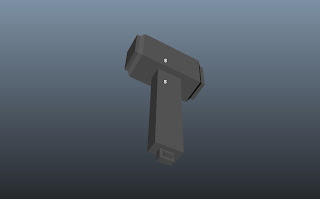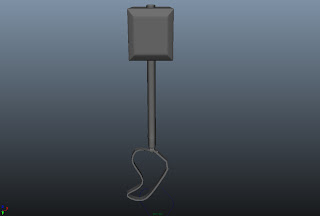Amanda Torres
Professor Tyrus Goshay
Modeling I
May 8, 2012
CG Galleries and
Tutorial sites
The links above are taken from a website called 3D Total. 3D
Total is a CG based community. They have a forum for artists to discuss their
projects and seek help and advice from other professionals. They also offer
free textures, and reference images. They also have an extensive gallery, where
artists can post recently finished projects to be critiqued by their peers. The
links number 2 and 3 are direct links to pictures that immediately caught my
eye. They are both of hard surface characters; one is an iron woman and the other
in a robotic alien. I really liked them because they both had very cool and
sleek designs to their “exoskeletons”. The alien head, especially, had many
small difficult details.
----------------------------------------------------------------------------------------
The links above are to a website
called, CG What. This is a website that also focuses on digital and 3D art.
This site offers several different video guided tutorials, and also a few
useful downloads. I choose three tutorials that sound like they would become
useful to me sometime soon or in the future. One tutorial I choose was to
create a very details zombie head using the Zbrush program in junction with Maya.
This tutorial was a little more advanced than the beginning tutorials. A cool
beginner tutorial I find on this site was to construct a zombie bunny. Like all
tutorials on the site, this one is video guided and the result is a large grotesque
rabbit. The third tutorial I picked out was one that teaches how to create texture
and uv for a previous tutorial involving a simple snail character.
----------------------------------------------------------------------------------------
The links above are to CG Art World. Although it is a CG
based art website, it does not have anything other than large and well
organized galleries. CG Art world has categories ranging from interior design,
to creature and vehicles. They also showcase 2D art in their anime girl
section, and icons. The three piece of art I choose from this site were taken
from the cg girl section, the mech section and the creature section. I choose
them because I thought they all had unique qualities to them. For example the
mermaid that I took from the CG girl section has a very beautiful design from
hair tentacles and also has a very delicate design on the buckles on her
clothing. Also the lighting by her hand makes it seem as though she was
partially drawn in. The battle droid in the mech section I found had a very
unique coloring to it; which, I felt, made it appear to look like a smaller
tinker toy version of an actual star wars battle droid. Finally, my favorite of
the cg art I looked at was the Salad Alien I found in the creature section. I
really loved this piece of CG artwork because the alien itself is made from
many pieces of vegetable carefully assembled together. The design is very
clever, with the use of a large egg plant for the alien’s head, and the use of
smaller chilies and peppers to form claws and teeth.
----------------------------------------------------------------------------------------
The last batch of links above is taken from a site called
CG-Artworks, and it is owned by an artist named Dieter Meyer. The website
houses his portfolio which is filled with various military vehicles and
personal. Here he showcase fully rendered artwork done by him, and he also offers
a few tutorials on how to make aircrafts and subdivision surfaces. The three
pages I choose from his gallery range from soldier to ship. The first is a
Sturm Grenadier, who is carrying an assault rifle. Meyer includes several views
on every finished model page, this way the trooper can be rotated and smaller
details such as his back pack and side pockets can be seen. A very interesting
model that I found on his site, had nothing to do with the theme of military,
but was beautifully designed. It is the top level of a haunted pirates ship,
and it has been texture in such a way that the ship looks to have risen out of
the sea itself. Lastly, I chose one of the many tanks Meyer had among his
pages. I really like the Marder III H because you could see into the cockpit or
cannon part of the tank, and he included very cool smaller details inside the
cockpit like ammunition shells and the cannon load out.























